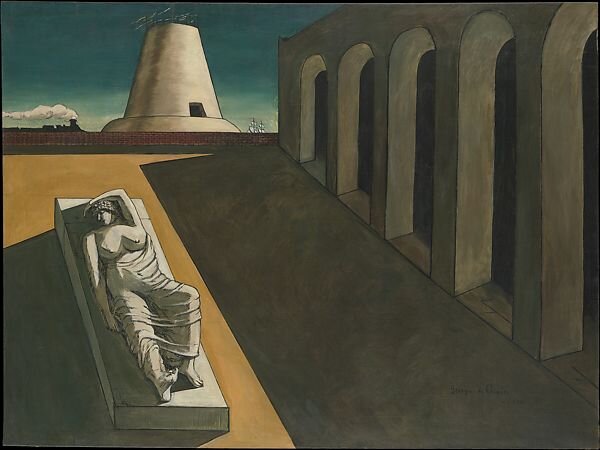This image of Giorgio de Chirico's 1913 Ariadne from the Metropolitan Museum-- one of his iconic pittura metafisica painted when he was newly ensconced in Paris during what is considered by many critics to be his most important and productive year--has been haunting me during the time of Covid. De Chirico who had spent his early years in Greece, was himself haunted by the Greek myth that tells of princess Ariadne abandoned by her lover Theseus on the island of Minos after he had slayed the Minotaur with her help. He had a heightened sensitivity to his surroundings as he had been forced to move frequently with his mother and brother during his childhood and adolescence. The somber colors of the empty piazza, sun-washed but shadowed, the neo-classic Italianate colonnade, the desolate woman turned away in pain, the signs of life--a train and a boat-- out of reach on a far horizon, are all delivered in very flat paint with the theatrical 3D perspective of a raked stage and speak to his sense of dislocation. De Chirico embraced architectural imagery to get at the very heart of this disorientation and isolation in a poetic way that was totally original. His juxtaposition of unlikely subjects and objects set the path for a new genre of painting--Surrealism. Even though Ariadne is depicted sarcophagus-like, to me, she is more evocative of the way I feel when I step outside of lockdown and see our empty streets and deserted buildings than any other work of art I've seen. Though the painting was not on display when the Met was forced to close, my hope is that they will put it front and center when our situation improves to remind us to be grateful for art and for life. Thank you Artists Rights Society for allowing me to post this symbolic image.
Giorgio de Chirico, 1913, Ariadne, Metropolitan Museum of Art, © 2020 Artists Rights Society (ARS), New York / SIAE, Rome
